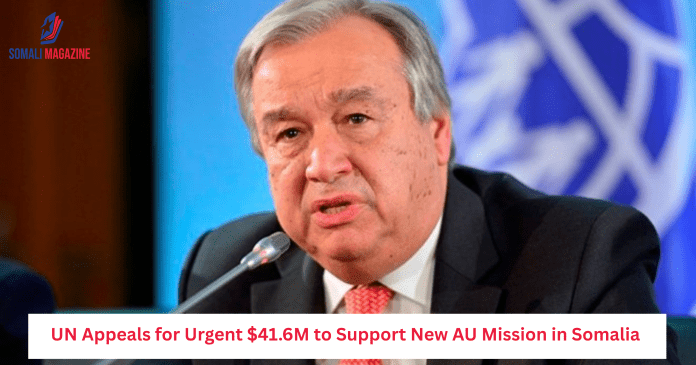Facebook Twitter (X) Instagram Somali Magazine - People's Magazine
With Al-Shabaab threats rising and political stability fragile, funding delays for AUSSOM risk undermining efforts to secure lasting peace in Somalia.
The United Nations is urgently appealing for $41.6 million in extra funding to support the African Union Support and Stabilization Mission in Somalia (AUSSOM). This comes as the Security Council held a closed-door meeting on Monday to discuss how to bridge the funding gap for the mission, which is working in a tough security environment with ongoing threats from the terrorist group Al-Shabaab and a fragile political situation.
The meeting was requested by Somalia and the United Kingdom to highlight the urgent need for funds. AUSSOM officially replaced the African Union Transition Mission in Somalia (ATMIS) on January 1, 2025. Although the mission was initially expected to cost $190.2 million per year, keeping the current pay rate for soldiers at $828 per month (instead of increasing it to $1,000) lowered the budget to $166.5 million.
According to UN Security Council Resolution 2719, which outlines a “hybrid funding model,” the UN is supposed to cover up to 75% of AUSSOM’s costs through assessed contributions—funds collected from UN member states. The remaining 25%, or $41.6 million, must come from extra donations by the African Union (AU) and international partners.
So far, only $14.5 million has been raised, including $10 million from the AU Peace Fund and $4.5 million from Japan and South Korea. This leaves a $27 million gap, which is causing concern among UN officials and Council members. There are fears that without the full funding, AUSSOM might not be able to carry out its duties effectively, just as Somalia continues to face serious security challenges.
“This funding gap is a serious concern,” said a UN official involved in the discussions. “If support doesn’t come quickly, the mission could lose momentum at a time when Somalia still faces high risks.”
A previous resolution, Resolution 2767, passed in December 2024, approved the transition from ATMIS to AUSSOM. It also allowed AU member states to use “all necessary measures” to support the new mission for one year. However, AUSSOM can only receive UN funding if the Security Council makes another decision—expected by May 15.
To make the hybrid funding plan more realistic, the UN launched an independent review of the UN Support Office in Somalia (UNSOS), led by experts Maman Sidikou and Neil Cole. This review found ways to save $61.6 million. More discussions between the UN and the AU led to an additional $63.3 million in cuts. In total, planned savings added up to $124.9 million.
These cuts, however, came with tough compromises. For example, the pay for soldiers will remain lower, some aircraft support will be reduced, death and injury compensation for troops will not be covered by UN funding, and mine-clearing efforts will now depend on voluntary donations.
Most Security Council members, including the African “A3 plus” group (Algeria, Sierra Leone, Somalia, and Guyana), European Union members, China, Russia, and Pakistan, support using the 2719 funding model for AUSSOM. However, the United States strongly disagrees. A new bill in the U.S. Senate aims to block American money from going to AUSSOM under this model. The U.S. argues that Somalia is not the right place to apply this kind of funding system and has proposed other ways to finance the mission.
As the Monday meeting ended, Council members remained divided on how to solve the funding issue. However, with Al-Shabaab still posing a serious threat to Somalia and the region, many stressed the need for urgent, united action to ensure the mission can succeed.

